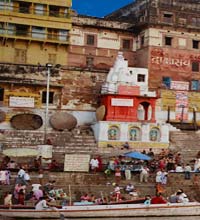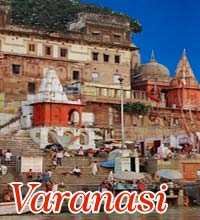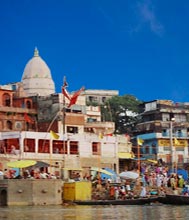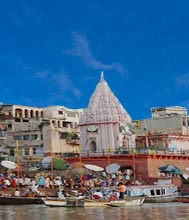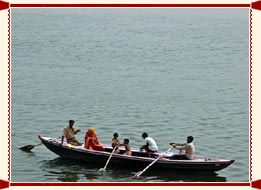 For
long, Ganges has symbolized India. This is not mere a river but also a
lifeline in itself. The river has nourished and lent succor to the
Indian civilization that has flourished along its course. Even the
pre-historic details confirm that Aryan hordes started settling
alongside the Ganges first. In a period when the sheer survival of
people used to be on stake, Ganga was the only respite for the
flourishing of human race. No wonder, Ganga has a statue of goddess in
the Hindu society and is seen as a sustainer in Indian society as a
whole.
For
long, Ganges has symbolized India. This is not mere a river but also a
lifeline in itself. The river has nourished and lent succor to the
Indian civilization that has flourished along its course. Even the
pre-historic details confirm that Aryan hordes started settling
alongside the Ganges first. In a period when the sheer survival of
people used to be on stake, Ganga was the only respite for the
flourishing of human race. No wonder, Ganga has a statue of goddess in
the Hindu society and is seen as a sustainer in Indian society as a
whole. The story of Ganges is no less interesting than the river itself. According to the Hindu mythology King Sager had 60,000 sons. He defeated all the demons in the earth and wanted to stage an Ashwamedha Yagya to declare his supremacy. For this, as was the practice prevalent in ancient times, he sent his horse across the earth accompanied by his sons. The King of Heaven, Lord Indira feared the power of King Sager and to stop him, he stole the horse and tied it to the ashram of Sage Kapil. When the 60,000 sons saw the horse in Kapil' s ashram they got furious and started to attack the hermitage. Sage Kapil was in deep meditation and on hearing the disturbance he opened his eyes in anger and all the 60,000 sons of King Sager were reduced to ashes. King Sager asked for forgiveness. Sage Kapil told him that the sons could be brought to life only if Ganga is brought from heaven to earth. He started meditating intensely for several years and finally Ganga got pleased and descended to the earth. To prevent the earth from flooding, Lord Shiva received Ganga on his matted locks and released Ganga from his locks in seven streams. The water of Ganga touched the ashes of Sager sons who rose to the their eternal rest in heaven. This is precisely because Ganges is seen as the provider of salvation for the human being.
Ganges starts its journey from a place called Gomukh. It is actually a glacier that looks like the head of a cow. There are actually seven different streams that form Ganges. Two major streams named Alakhnanda and Mandakani merge at a place called Rudra Prayag that in turn confluence with Bhagirathi at Dev Prayag to form Ganges. It flows to the Holy town of Rishikesh forming rapids that are suitable for white-water rafting. Haridwar is the first town in the plains that is enriched by Ganges. The place is spot for Kumbh fair that takes place every 12 years. It then flows to the holy town Gadh Mukteshwar. This is the closest Ganga ever flows near New Delhi.
Ganges then travels to the industrial town of Kanpur whose industries flourishes on the dose from this river. It moves to Allahabad that is considered as one of the most religious centers in India. Here river Yamuna joins it to give it a even broader flow. The confluence is famous for the Kumbh Fair that takes place every 12 years. Then comes the city of Vishwanath, Banaras. In its whole course, this is the first place where Ganga flows northwards. This is considered auspicious and that is why the city has a special place in the hearts of devotees.
Ganga enters the state of Bihar near Dehri-on-son. Chambel and Betwa rivers join it during this course. Patna is the first major town that falls on its map. It is situated on the confluence of Son and Ganges. The stream of Ganga gets wider and wider as its tributaries start joining it. Close to Patna is Hajipur where Gandak joins Ganga and almost doubles it flow. Bhagalpur is another town apart from Varanasi where Ganges flows northward for a brief period. Ganga enters Bengal and a distributaries of it, is christened Hoogly. The imperial capital of Calcutta is situated on its banks. Various small tributaries in the middle join it before it enters Bangladesh and re-christened Padma. In Bangladesh intimidating Brahamputra joins it and the resultant river is named Meghna. It starts breaking up into distributaries before it joins the Bay of Bengal creating a delta named Sunderban.

